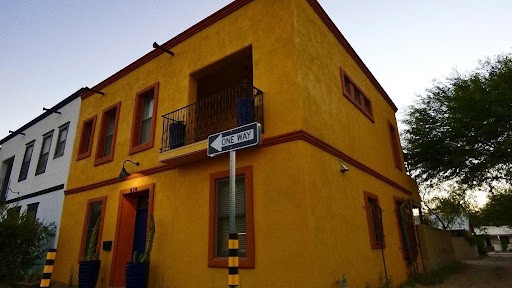When planning a trip, most of us would take some time to figure out what locations we would like to visit, whether within the state or out of the country. For example, we might look at cost, weather and attractions and even do an overall cost-benefit analysis of the best hotels and places to see.
Social determinants of health are very similar to how one might investigate a vacation spot, as SDOH assesses the conditions of the environment in one’s life. SDOH analyzes the environment in which people live, work and learn by examining economic stability, education (access to quality), health care (access and quality), neighborhood (safety) and social community contexts.
Clint Smith is an American writer, poet and scholar, well known for his New York Times bestseller, “How the World is Passed: A Reckoning With the History of Slavery Across America,” and his poetry collection “Counting Descent,” among his other works regarding the Black experience within America. Smith’s piece titled “Place Matters” is a perfect example of narrating the significance of SDOH in people’s lives.
Smith discussed the harsh realities of how one’s ZIP code can determine various aspects of life, from living a healthy, nutritious lifestyle to achieving financial stability, increasing mental health issues and more. The referenced ZIP code within the poem is a predominantly Black community in America, and the work highlights the community’s lack of access to a nutritionally balanced diet, safety and economic stability.
Smith explained that one of the deficiencies many Black communities face is the scarcity of accessible grocery stores. A common phrase we might have heard throughout our lives is “food is medicine;” proper nutrition is a critical part of health and development. Smith discussed how many of his students after school walk into stores where all foods they “find are fried.” Fresh foods cannot be found because there are no grocery stores, and the students are rather engulfed by the large fast food chains like “Popeyes, Dunkin Donuts, and 7-elevens”.
Specific ZIP codes result in communities of food deserts, which are neighborhoods in which “people have limited access to a variety of healthy and affordable food,” according to the U.S. Department of Agriculture.
ZIP codes are also partly responsible for severe health issues for all generations, from obesity to diabetes and weak joints from an early age. According to Smith, growing up in a community like the one he mentions in “Place Matters” gives residents a life expectancy of almost thirty years shorter than those in a county a mere seven miles away.
Courtney Crosson, an associate professor of architecture at the University of Arizona and the director of the Drachman Institute, explained the matter in more detail and its impact on Tucson. Crosson has conducted valuable research for possible sustainable solutions to food deserts in Tucson and, through this, learned that our community has “nearly 94,000 people, or about 18% of people, living in food deserts.”
However, Crosson made an interesting point: eliminating food deserts and introducing supermarkets in lower-income areas would not significantly change people’s nutritional habits. So, it becomes a “bigger question, it is not just about the supermarkets which was the original story, but about education, culture and affordability with a much larger social story at play,” Crosson said.
Another SDOH discussed within Smith’s poem is the increased risk of violence within the community.
Smith describes how one of his students, Olivia, “watched her father get shot two feet from her house as she was leaving to play.”
The inequity present here is the lack of safety these children have within their neighborhoods; they can not go on walks with their friends, go to the park or even draw on the sidewalk with chalk because it is not safe as danger permanently resides at the corner of these streets.
The instability can be traced to systemic issues, as fewer commercial investments are established in Black and Brown communities, which can give rise to robberies and violence. Some of the reasons for the lack of safety are due to America’s segregated housing, “inhibiting wealth accumulation through housing value [and limiting neighborhood] access to high-quality schools” within Black communities, according to a study conducted by the University of Pennsylvania.
The fact is that many people when looking at health disparities (SDOH), focus on achieving equality. However, equality “fails to appreciate the multidimensional systemic issues” ranging from “economic, social, cultural, historical and political factors that unfairly advantage some groups and disadvantage others,” according to Johns Hopkins University Press.
Therefore, to change these communities’ fates, one must look at the structural barriers at the issue’s root, which is difficult.
SDOH are directly linked with socioeconomic stability as one with more wealth can easily bypass these struggles despite the structural obstacles present in the environment; Smith points out that “when you are not choosing between your medicine and your groceries, health does not have to be a luxury.”
The poverty within these communities affects everything from health care access to the foods they eat to violence in the neighborhoods. As reported by the International Journal for Equity in Health, “income is positively associated with health-related quality of life.”
Poverty is one of the most prominent issues within Tucson and is the common denominator that acts as an obstacle to economic justice, food security and other SDOH. In 2021, the national poverty rate was 11.6%, while it was 19.8% for Tucson, according to the U.S. Census Bureau.
In order to achieve equity in Tucson, and in any community, it is crucial for the government to “provide the necessary support and resources people need to have adequate access and availability to quality education, jobs, health care, behavioral health services and social services,” according to research conducted by the Johns Hopkins University Press.
Pima County is actively trying to combat poverty through social programs that aid in transitioning people out of poverty and into the workforce, along with the assistance of nonprofit organizations. However, it is difficult to work as COVID-19 has only exacerbated the situation.
Jax Seline, a project manager at Arizona Prevention Research Center and an instructor of principles of health education and health promotion, revealed some very applicable information regarding social determinants and COVID-19.
Seline was involved with Mitigating the Impact of COVID in Communities of Color, which focused on providing mobile basic testing and vaccination services, particularly for people of color, refugee and immigrant populations within Tucson.
“The data collected indicated that parts of Tucson’s positivity rates were 33% or higher as one in three people had a positive test,” said Seline.
The positive test rates were directly correlated with areas of higher social vulnerability scores (a composite of measures of a variety of social factors).
As already discussed, a lower socioeconomic status leads to a plethora of issues. For example, “the lack of transportation makes it harder to get to a doctor’s appointment, historically under-investments due to systemic racism causes less access to safe housing, grocery stores and all these factors were heightened in [COVID-19],” Seline said.
All of these factors overlapped in areas with less access to key SDOH, and these areas saw higher social vulnerability scores and higher COVID-19 rates as well, according to Seline.
These SDOHs presented within a restricted ZIP code of these Black communities are systemic, unavoidable and unjust, creating significant inequities across America.
It is essential to understand what social determinants of health are, how they affect people’s lives and that Black communities and POC communities disproportionately face systemic struggles and health inequities before seeking solutions. Awareness is the first step for change.
Follow the Daily Wildcat on Twitter









